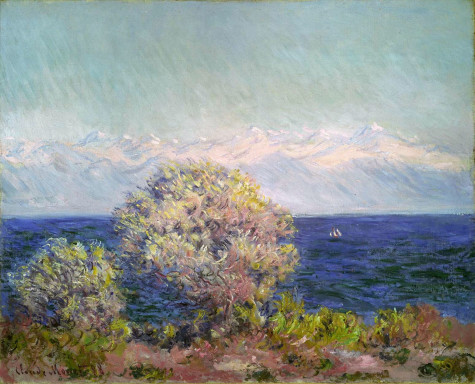Of all the evocative place words humans have come up with, the words for local winds may be the most varied and most charming. There’s the Albrohos of Portugal, the Gilavar and the Khazri of Azerbaijan, and the Shamal of Iraq. There’s the Cape Doctor of South Africa, the Hawk of Chicago, and the Wreckhouse winds of Newfoundland.
I live in the Columbia River Gorge, a place famous for its wind. The wind blows mostly from the east in winter and mostly from the west in summer, and every spring it lifts the boarders’ bright polyester kites above the water like so many tropical birds.
What do we call this glorious force of nature? We call it … the wind.
Like the Santa Ana, the strong, dry, famously irritating wind that strikes Los Angeles in the fall and winter, and the Mistral, the wind that periodically blasts the south of France with Alpine air, the winter wind in the Gorge is katabatic, meaning that it blows downhill from high pressure to low. Unlike the Mistral—which is named after the Latin word for “master”—and the Santa Ana, which has competing etymologies, the wind that funnels into the Gorge from the Great Basin has no proper name.
Monet painted the Mistral, as did Gaugin. Van Gogh did, too (though he complained bitterly about the aggravating wind, which forced him to secure his plein air easel to the ground with a spike). Both Raymond Chandler and Joan Didion crafted iconic lines about the unsettling Santa Ana.
Would any of these masters have bothered with a nameless wind? I wonder.
Named winds are romantic, even seductive. In the movie The English Patient, Hungarian cartographer Count László de Almásy, stuck in a Saharan sandstorm with British adventurer Katherine Clifton, tells her of the Aajej, the Ghibli, and the Harmattan, a wind said to produce rains so red with dirt that they were mistaken for showers of blood. He tentatively lifts a hand to touch her hair, still talking about the Simoom of North Africa, a wind that so enraged one nation that “they declared war on it and marched out against it.”
Imagine if Almásy had ended these sesquipedalian sweet nothings by saying, “Oh, and on the west coast of North America, in the Columbia River Gorge, they call the wind … the wind.”
‘Twould be a very different movie, I tell you.
I’m not the first to notice the anonymity of our wind. Several years ago, The Oregonian and the Oregon chapter of the American Meteorological Society held a contest to name the Gorge’s winter wind. Out of 7,000 entries, the winner was “Coho.” Not a bad choice: it’s easy to remember, fun to say, regionally relevant, and elegantly reminiscent of the warm, dry spring Chinook. Unfortunately, it never caught on.
In the book The English Patient, by Michael Ondaatje, Almásy displays his knowledge of winds not in romantic murmurs but in a set of notes scrawled in his copy of Herodotus’ Histories. He writes of the Aajej, the Ghibli, and the Harmattan, and of a nameless wind: “There is also the ———, the secret wind of the desert, whose name was erased by a king after his son died within it.”
The secret wind of the desert. I like to think Almásy was talking about the Gorge.
Top image: “Cap d’Antibes, Mistral” by Claude Monet, 1888. Photograph by Flickr user Carlos R38. Creative Commons.

There’s the Fremantle Doctor blowing into southern Western Australia.
Here in Victoria in summer, there’s that bloody north wind (we’re not as imaginative in our naming)
we do call them Gorge Winds. Have for decades.
Reading this, I have to wonder if any of the Tribes in the area of the Columbia already have names for the winds there. Names that have been spoken since time immemorial. I’d imagine they do. Has anyone asked?